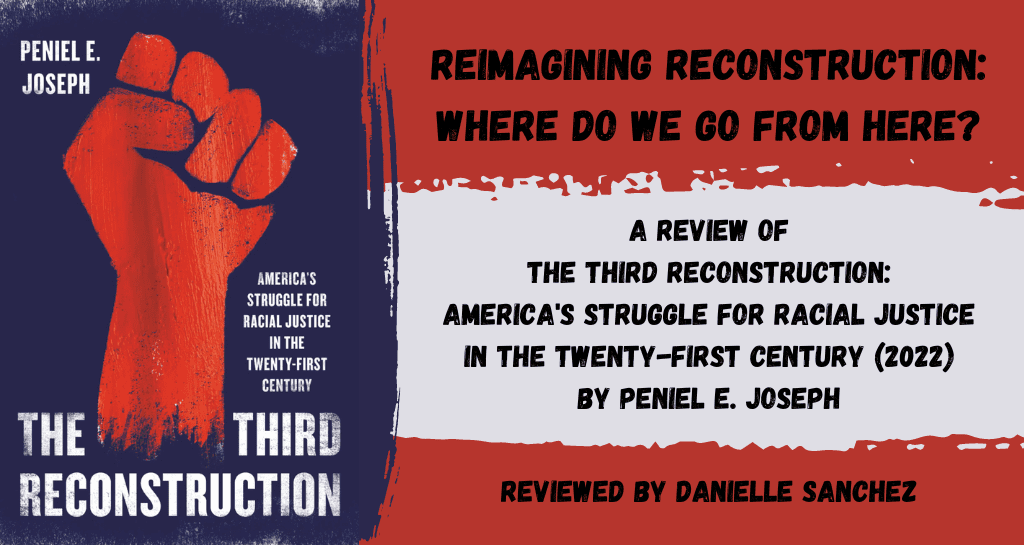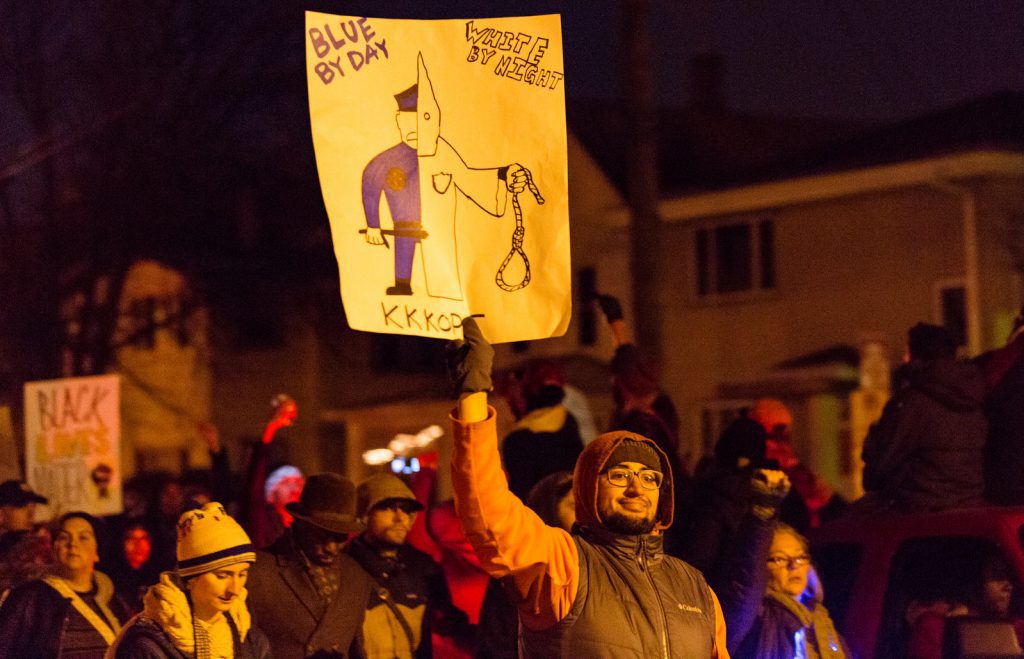
Review by Danielle Sanchez
Joseph, Peniel E. The Third Reconstruction: America’s Struggle for Racial Justice in the Twenty-First Century. New York: Basic Books, 2022.
Reconstruction is often a topic of confusion for readers. When did it begin? When did it end? What did it entail? Peniel Joseph’s latest book, The Third Reconstruction: America’s Struggle for Racial Justice in the Twenty-First Century, divides Reconstruction after the Civil War into three distinct time frames, punctuated by watershed moments that spurred a realignment of political beliefs and viewpoints. The First Reconstruction encapsulates the period of 1865-1898, with its defining feature and watershed moment being summed up in the 13th Amendment. The Second Reconstruction spans the period of 1954-1968, essentially bookending the modern Civil Rights Movement with the Supreme Court decision of Brown vs. Board of Education and the assassination of Dr. Martin Luther King Jr. The Third Reconstruction is in the much more recent past, Joseph argues, citing Obama’s election in 2008 as the major watershed moment, and continuing into the age of Black Lives Matter.[1]Joseph’s thesis that Reconstruction was not a period that ended in the 19th century, and rather a cyclical progression that continues to the present, is central to understanding his inclusion of autobiographical anecdotes from his own life in this work. His analysis deals with the United States’ attempts to grapple with the full citizenship and enfranchisement of Black people, as well as how his own experiences support the claims he makes.

Joseph mixes an autobiography of sorts with an analysis of racial culture and political climate following the Civil War. He extensively describes anti-Black violence and the resurgence of blatant racism and the return of late 19th-century rhetoric following the election of Donald Trump in 2016. The election put Americans on the precipice of a decision: they could turn away from racism towards an equitable future by enforcing- rather than merely preaching inclusivity; or they could continue along the same path they had walked since before the Civil War. In his own words, “America had reached a moment of existential inflection. The latest hinge point in our Third Reconstruction offered all of us, collectively, an opportunity to transform American democracy by defeating institutional racism and eradicating white supremacy.”[2] The hinge point that Joseph refers to provides him with a reason and connection with which to include his own story in his analysis of modern-day America.
Joseph draws on his personal experience as a Haitian and a first-generation Black American to understand the Third Reconstruction in the present-day. He also shows what it means to grow up Black in the United States through intertwining stories from his own life with ones that trace Barack Obama’s path to the presidency. Through these stories, he also tracks a shift in American culture, which has contributed to a misleading “post-racial” understanding of American society. Joseph critiques the concept of American exceptionalism, stating that it rests on two core lies: first, that “Black people are not human beings”; and second, “that the first lie never happened.”[3] The centrality of this claim undergirds the middle-of-the-road path taken by Obama and other politicians, which Joseph critiques in his examination of an American dream that is still a nightmare for many Black Americans.

Joseph
also incorporates a discussion of what Black dignity means as examined through
the lenses of different Black activists and leaders throughout history. His
book draws strong parallels between the activism of Malcolm X, Martin Luther
King Jr., Jesse Jackson, Angela Davis, and even Obama himself. While Joseph
distinguishes between the activities and achievements of these figures, he
makes it clear that each of them worked for the benefit of Black rights in
their own time frame and context. By identifying what these figures had in
common, Joseph paints the three Reconstructions as remaining remarkably similar
throughout history, even though their individual goals and figures may have
differed. By tracing a path from Martin Luther King Jr. to Obama, he circles
back to his claim that American exceptionalism rests on the lie that Black
people are not human beings. The same issues that powerhouse activists such as
King and Davis grappled with in the mid-20th century are still being addressed
today, and while “we have been collectively reluctant to acknowledge about how
a living history has actively shaped our present and might impact our future,”
with the collective message of activists remaining the same, we are ready to
face up to our past and work with a living history to positively affect the
future.[4]
[1] Peniel E. Joseph, The Third Reconstruction: America’s Struggle for Racial Justice in the Twenty First Century, (New York: Basic Books, 2022),13.
[2] Ibid, 169.
[3] Ibid, 57.
[4] Ibid, 224.
The photograph included in this article has been used under a Creative Commons 2.0 license.



